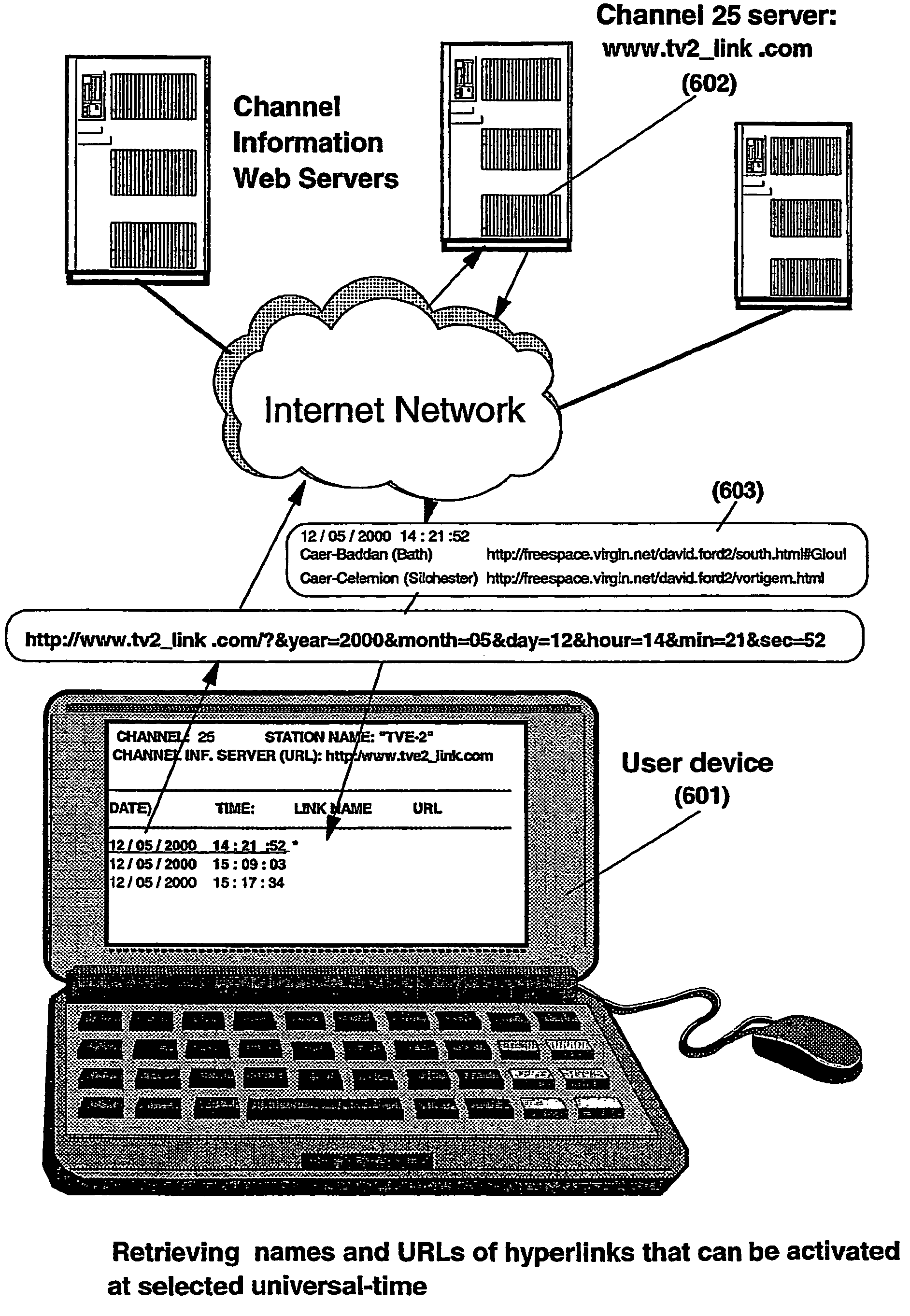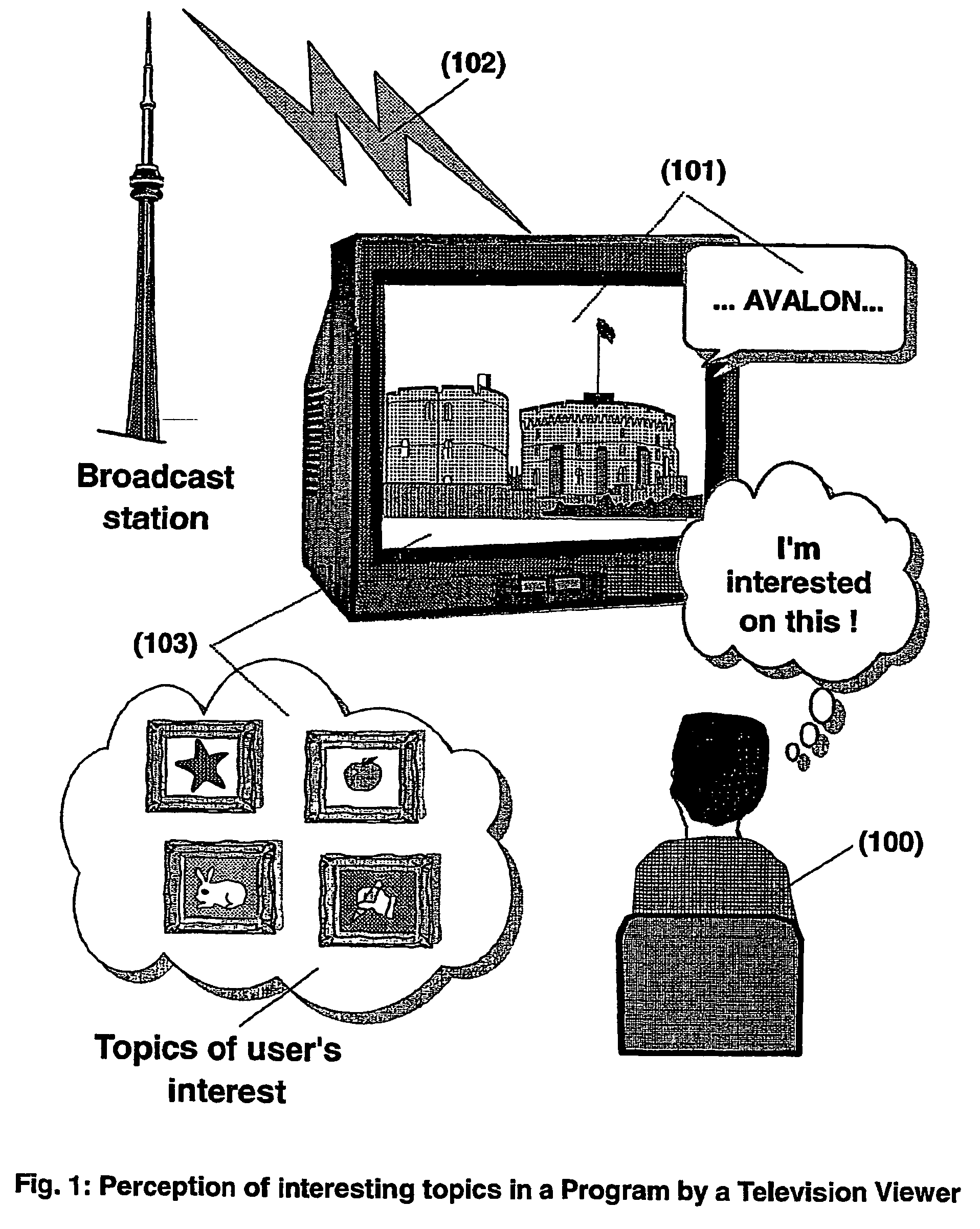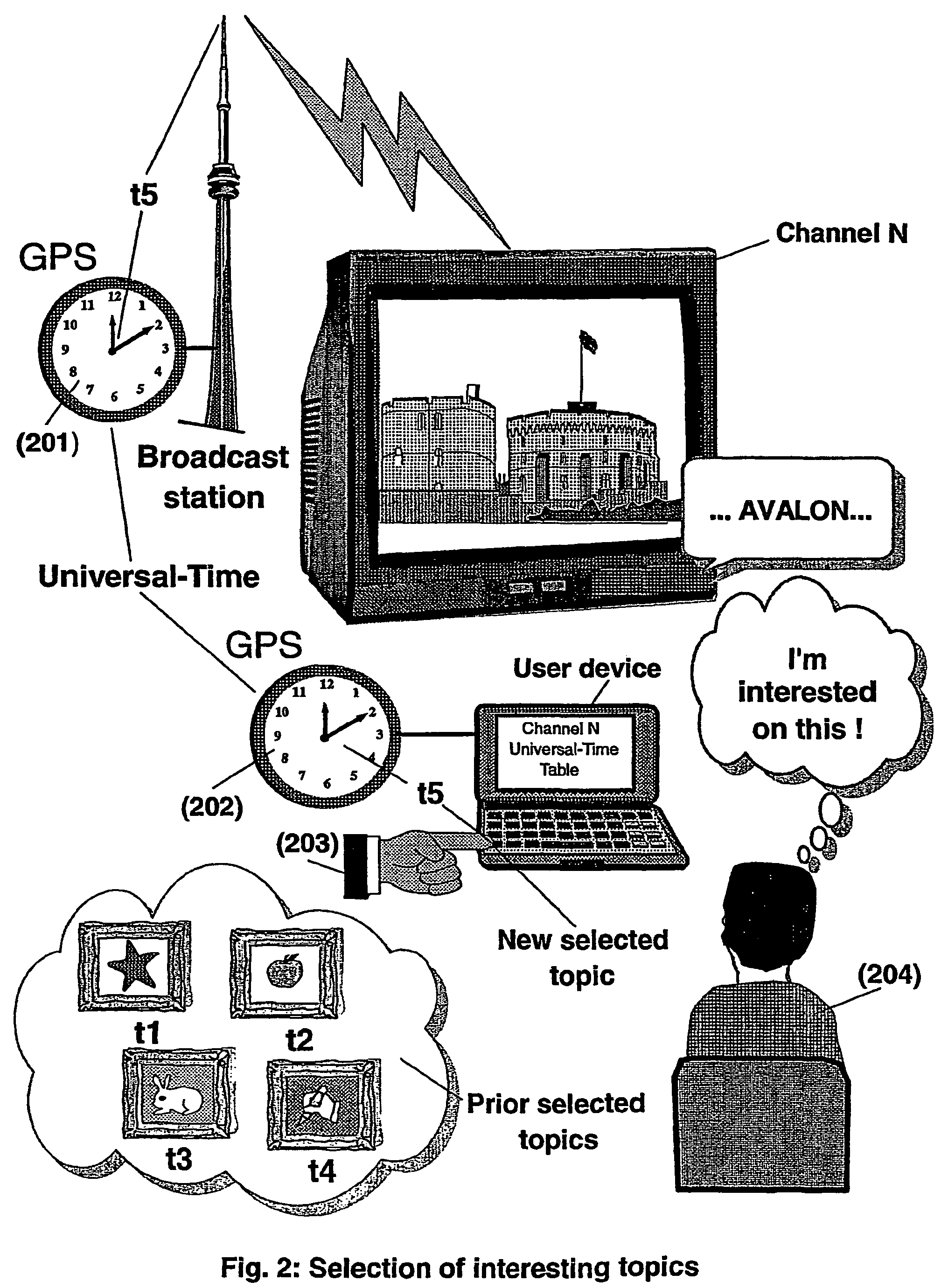System and method for enhancing broadcast or recorded programs with information on the world wide web
a technology of information on the world wide web and applied in the field of system and a method for enhancing broadcast or recorded programs, can solve the problems of losing most of the information, people cannot interact with the programs to seek additional information or services, and the communication is limited to one, so as to facilitate access to information and more conveniently access additional information
- Summary
- Abstract
- Description
- Claims
- Application Information
AI Technical Summary
Benefits of technology
Problems solved by technology
Method used
Image
Examples
Embodiment Construction
[0098]As shown in FIGS. 1, 219 and 20, the present invention discloses a system (and a method for enabling a radio auditor or a television viewer (100, 204, 1900) to access additional information related to particular topics or sequences (103, 1901, 1902) in a program (101, 1903, 2008) retransmitted by a radio or television broadcasting station (102, 2001) (or recorded and played back on an audio or video player / recorder (1904, 2003)). The principle is to synchronize the local time of transmitters (201, 2004) and receivers (202, 2005) (or recorders (2003)) according to a same universal time, such as for example, the Universal Time Co-ordinated (UTC) or the Global Positioning System (GPS) time.
[0099]As shown in FIGS. 3 and 21, the preferred embodiment of the invention provides a system, and a method for enabling a person (301, 2101) receiving a broadcast program (302, 2008) (or playing back a radio or television program (2102) previously recorded), to select (303, 2112) a plurality o...
PUM
 Login to View More
Login to View More Abstract
Description
Claims
Application Information
 Login to View More
Login to View More - R&D
- Intellectual Property
- Life Sciences
- Materials
- Tech Scout
- Unparalleled Data Quality
- Higher Quality Content
- 60% Fewer Hallucinations
Browse by: Latest US Patents, China's latest patents, Technical Efficacy Thesaurus, Application Domain, Technology Topic, Popular Technical Reports.
© 2025 PatSnap. All rights reserved.Legal|Privacy policy|Modern Slavery Act Transparency Statement|Sitemap|About US| Contact US: help@patsnap.com



